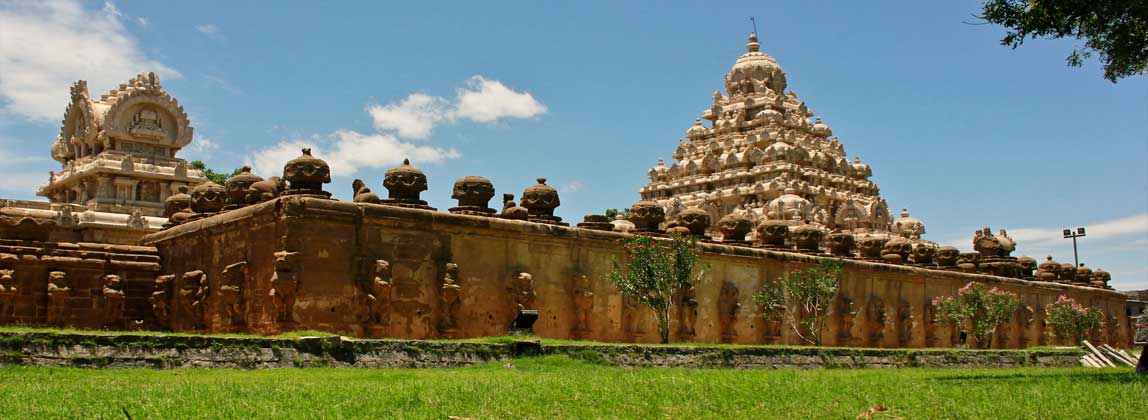


KANCHIPURAM - Legend is said to provide eternal happiness to those who visit the city. It is said that "Ka" (Brahma) "anchi" (worshipped) Hindu God Vishnu at this place, which is why the city was given the name Kanchipuram (puram meaning "city)." Also known as the 'City of 1000 Temples', it is located approximately 70 Kms from Chennai.
Being one of the ancient cities in South India, the history of Kanchipuram can be traced back to the reign of the Pallavas. It acquired its glory under the Pallava dynasty, from the 4th to 9th centuries and was the capital city of the Pallavas. Most of the temples in this town were constructed during this period. Subsequently, the city was ruled by the Cholas, the Vijayanagara dynasty and the British. The temples and monuments seen in the city are an example of the architectural mastery of Dravidian dynasties in the South.
Kanchipuram is considered one of the seven holiest cities to the Hindus and is also very famous for its hand woven silk sarees.
Dedicated to Siva, Kailasanatha is one of the earliest temples. It was built by the Pallava king, Rayasimha, in the late 7th century, though its front was added later by his son, King Varman III. It is the only temple at Kanchi which isn't cluttered with the more recent additions of the Cholas and Vijayanagar rulers, and so reflects the freshness and simplicity of early Dravidian architecture. Fragments of the 8-th century murals which once graced the alcoves are a visible reminder of how magnificent the temple must have looked when it was first built.
Dedicated to the goddess Paravati, this important temple is the site of the annual Car Festival, held on the 9th lunar day in February -March. When not in use, the ornately carved wooden car is kept partially covered in corrugated iron halfway up Gandhi Rd. The temple has a golden gopuram in the centre.
IMP: Kanchipuram temples remains closed from 1300 hrs till 1600 hrs.
It is dedicated to Siva and is one of the largest temples in Kanchipuram, covering nine hectares. Its 59 m high gopuram and massive outer stone wall were constructed in 1509 by Krishna Devaraja of the Vijayananagar Empire, though construction was originally started by the Pallavas and the temple was later extended by the Cholas. The temple's name is said to be a modified form of Eka Amra Nathar - the Lord of the Mango tree and in one of the enclosure is a very old mango tree with four branches representing four Vedas. The fruit of each of the four branches is said to have a different taste.